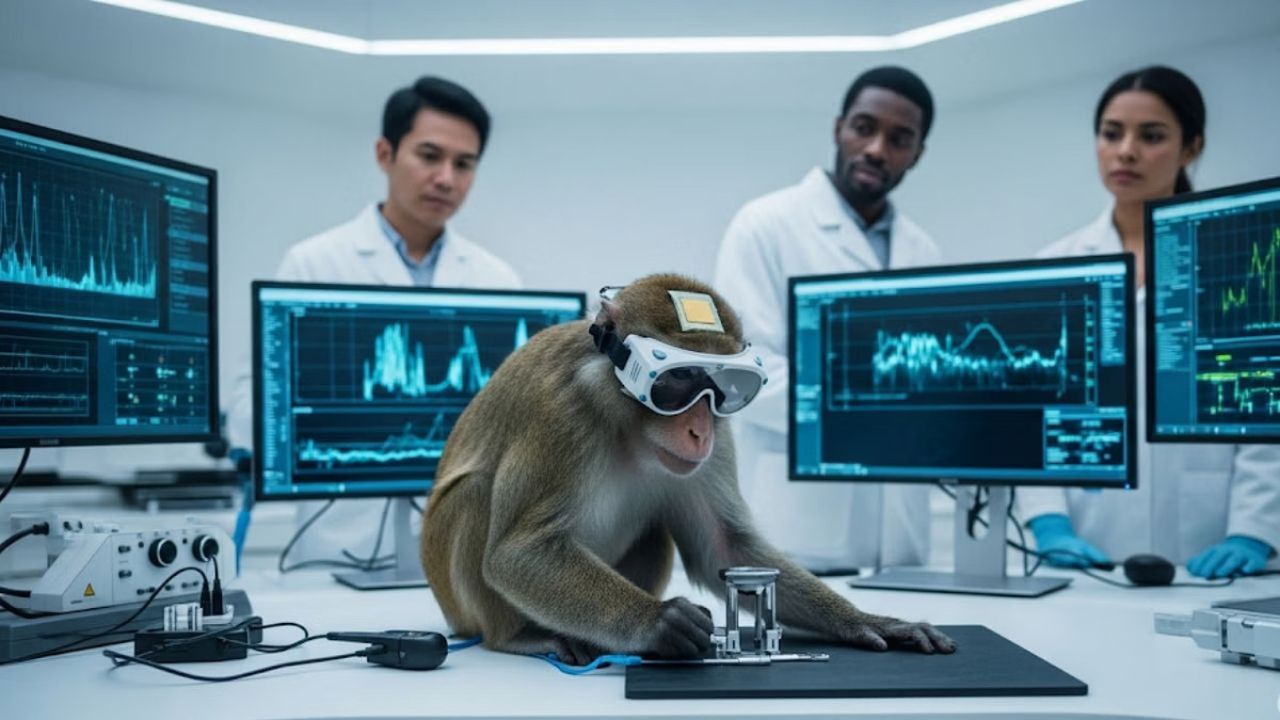What if your brain could be tricked into seeing something that isn’t even there? In a remarkable leap forward for brain-computer interface technology, Elon Musk’s Neuralink has revealed a groundbreaking experiment that may redefine how humans experience vision.
At a recent conference, Neuralink engineer Joseph O'Doherty shared that the company had used a brain implant, part of its experimental Blindsight system—to directly stimulate a monkey's visual cortex. The goal? To create the perception of a visual cue that wasn’t actually present. Remarkably, the monkey responded to these artificial visual prompts approximately two-thirds of the time, effectively "seeing" something that didn’t exist in the physical world.
Also Read: Who Saw That Coming? Meta Taps Ads Chief Arun Srinivas as India Head
This breakthrough marks the first time Neuralink has publicly shared results from its Blindsight tests, which are designed to replicate the basic function of an eye. The implications are enormous and not just for those who are visually impaired, but also for the future of neurotechnology, where the boundary between mind and machine is rapidly dissolving.
From Restoring Sight to Unlocking Superhuman Vision
While the short-term goal of Blindsight is to help restore vision to the blind and visually impaired, Musk has an even more ambitious long-term vision. He imagines a future where the same technology could grant superhuman visual capabilities, such as infrared vision or enhanced depth perception. Neuralink has been testing the system in monkeys for several years, gradually refining its approach.
Earlier this year, Musk stated that human trials for the Blindsight brain implant could begin before the end of 2025, a bold move that could revolutionise assistive technology and sensory enhancement. However, despite the promise, there's a caveat: results from animal studies don’t always translate directly to humans. Moreover, the Blindsight device has not yet received FDA approval or clearance for use in human subjects within the United States.
Also Read: Siri Ghosted WWDC 2025 — But Apple Dropped These AI Bombshells Instead
Next Frontier: Communication, Movement, & More
Beyond vision, Neuralink is forging ahead with brain implants aimed at helping individuals with paralysis regain digital agency. These implants allow users to communicate directly with computers and digital devices, bypassing the need for physical interaction. According to Musk, five people have received Neuralink implants so far—three in 2024 and two in 2025. Some of these recipients are reportedly using their implants for up to 60 hours per week, showcasing the technology’s growing usability and reliability.
O'Doherty also presented research on a related breakthrough—using a Neuralink implant to stimulate a monkey’s spinal cord, causing its muscles to move. This experiment signals a promising direction for future efforts to restore mobility in people with spinal cord injuries, a field already being explored by other neuroscience and biomedical researchers.




